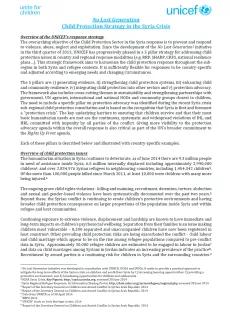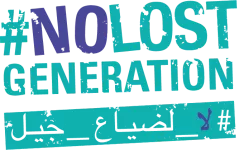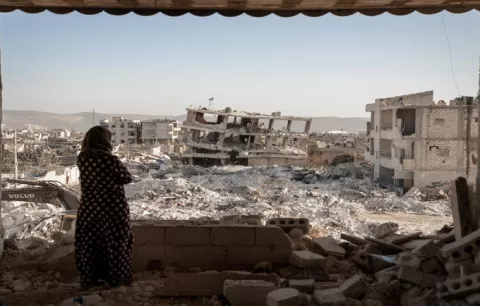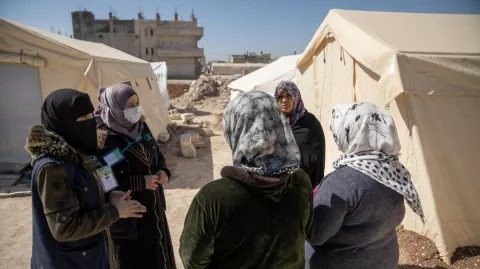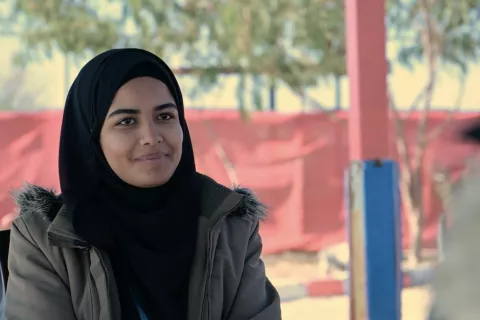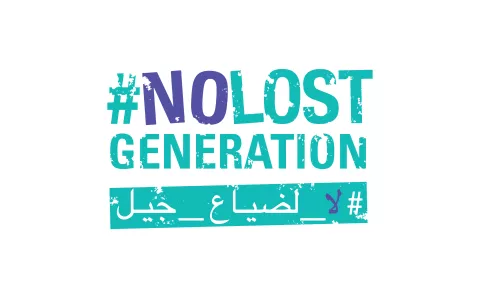No Lost Generation: child protection strategy in the Syria crisis
UNICEF
Highlights
The overarching objective of the Child Protection Sector in the Syria response is to prevent and respond to violence, abuse, neglect and exploitation. Since the development of the No Lost Generation initiative in the third quarter of 2013, UNICEF has progressively phased in a 5 pillar strategy for addressing child protection issues in country and regional response modalities (e.g. RRP, SHARP, CRFS, national resilience plans…). This strategic framework aims to harmonise the child protection response throughout the sub-region in both Syria and refugee contexts. It is sufficiently flexible for responses to be country-specific and adjusted according to emerging needs and changing circumstances.
The 5 pillars are: i) generating evidence, ii) strengthening child protection systems, iii) enhancing child and community resilience, iv) integrating child protection into other sectors and v) protection advocacy. The framework also includes cross-cutting themes in sustainability and strengthening partnerships with government, UN agencies, international and national NGOs and community groups closest to children. The need to include a specific pillar on protection advocacy was identified during the recent Syria crisis sub-regional child protection consultation and is based on the recognition that Syria is first and foremost a “protection crisis”. The key underlying barriers to ensuring that children survive and that their most basic humanitarian needs are met are the continuous, systematic and widespread violations of IHL and HRL committed with impunity by all parties of the conflict. Giving more visibility to the protection advocacy agenda within the overall response is also critical as part of the UN’s broader commitment to the Rights Up Front agenda.
